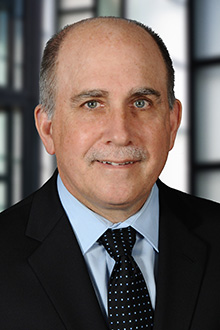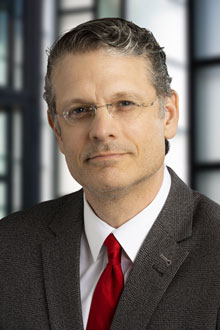California Capital Insurance Company v. Employers Compensation Insurance Company

(General Liability Insurer’s Contribution Lawsuit Against Workers’ Compensation and Employers’ Liability Insurer Fails as It Did Not Insure Same Risk)
(June 2023) - In California Capital Ins. Co. v. Employers Compensation Ins. Co., 89 Cal.App.5th 638 (March 20, 2023), the California Fourth District Court of Appeal reversed the trial court’s entry of judgment in favor of general liability insurer California Capital Insurance Company (“California Capital”) against Employers Compensation Insurance Company (“ECIC”) in connection with incurred defense costs and indemnity amount paid to settle an underlying personal injury lawsuit. The parties’ dispute arose out of an automobile accident, wherein both the driver of the vehicle, Asia Torres, and the plaintiff passenger, Byron Remeyer, worked for La Sirena Grill (“La Sirena”). On the night of the accident, Torres and Remeyer had drinks at La Sirena and then left to go to a party around 10:00 p.m. Subsequently, Torres, who was intoxicated, drove his vehicle into a tree. As a result, Remeyer sustained traumatic brain injuries.
Remeyer filed a lawsuit against La Sirena and Torres for negligence. He alleged that Torres was a cook at La Sirena and got drunk on the job on the night of the accident. He also alleged that drinking on the job was a common occurrence at La Sirena. He further alleged that La Sirena provided Torres the alcohol on the night of the accident. In addition, he alleged that La Sirena was well aware that Torres was drunk on the night of the accident, but did not prevent Torres from driving. Lastly, Remeyer alleged that Torres was acting within the course and scope of his employment at the time the accident occurred and that La Sirena provided Torres with the vehicle involved in the accident.
La Sirena tendered the defense to California Capital, which agreed to defend the lawsuit subject to a reservation of rights based on the workers’ compensation exclusion in its policy. Discovery conducted in the lawsuit established that Remeyer was also an employee of La Sirena and that both parties had been off the clock for several hours before the accident occurred.
Subsequently, the plaintiff made a policy limits demand to California Capital to settle the lawsuit for $2 million. However, California Capital continued to defend the lawsuit and also tendered the defense to ECIC. In response, ECIC denied coverage for the lawsuit. Ultimately, California Capital settled the lawsuit for $2 million and filed a contribution lawsuit against ECIC contending that it was responsible for half the defense costs and $1 million of the settlement amount paid to resolve the lawsuit. After a bench trial, the court found that potential coverage was triggered under the ECIC policy and found that ECIC was obligated to reimburse California Capital for half of its defense costs and half the amount paid to settle the lawsuit.
In reversing the trial court’s decision, the Court of Appeal described equitable contribution as follows:
Equitable contribution (not to be confused with equitable subrogation or equitable indemnity) is a loss sharing procedure by which an insurer that defended and settled a claim against its insured may seek to apportion those costs among coinsurers who refused to settle or defend the claim. (Maryland Casualty Co. v. Nationwide Mutual Ins. Co. (2000) 81 Cal.App.4th 1082, 1089 [97 Cal. Rptr. 2d 374]; see also Croskey et al., Cal. Practice Guide: Insurance Litigation (The Rutter Group 2022) 8:65.1, p. 8-26 [discussing differences between equitable contribution, equitable indemnity, and equitable subrogation, and noting “it is important for an insurer seeking reimbursement from other insurers to select the appropriate remedy”].)
“In the insurance context, the right to contribution arises when several insurers are obligated to indemnify or defend the same loss or claim, and one insurer has paid more than its share of the loss or defended the action without any participation by the others. Where multiple insurance carriers insure the same insured and cover the same risk, each insurer has independent standing to assert a cause of action against its coinsurers for equitable contribution when it has undertaken the defense or indemnification of the common insured. Equitable contribution permits reimbursement to the insurer that paid on the loss for the excess it paid over its proportionate share of the obligation, on the theory that the debt it paid was equally and concurrently owed by the other insurers and should be shared by them pro rata in proportion to their respective coverage of the risk. The purpose of this rule of equity is to accomplish substantial justice by equalizing the common burden shared by coinsurers, and to prevent one insurer from profiting at the expense of others.” (Fireman's Fund Ins. Co. v. Maryland Casualty Co. (1998) 65 Cal.App.4th 1279, 1293 [77 Cal. Rptr. 2d 296], fn. omitted (Fireman's Fund).)
As respects a claim for equitable contribution, the Court of Appeal noted as follows:
Equitable contribution is only available if the two insurers “‘share the same level of liability on the same risk as to the same insured.’” (Transcontinental Ins. Co. v. Insurance Co. of the State of Pennsylvania (2007) 148 Cal.App.4th 1296, 1303 [56 Cal. Rptr. 3d 491]; see also Fireman's Fund, supra, 65 Cal.App.4th at p. 1294, fn. 4.) If the insurers do not (1) “share the same level of obligation, (2) on the same risk, (3) as to the same insured[,] … the equitable contribution claim must fail.” (Lexington Ins. Co. v. Allianz Ins. Co. (9th Cir. 2006) 177 Fed. Appx. 572, 573; see, e.g., Travelers Indemnity Co. of Ct. v. Hudson Ins. Co. (E.D.Cal. 2020) 442 F.Supp.3d 1259, 1269 [CGL insurer was not entitled to equitable contribution from common insured's professional liability insurer because their two policies “did not insure … against the same risk”].)
Because the “risks” covered by the California Capital and ECIC policies were not the same, the Court of Appeal found that California Capital was not entitled to equitable contribution from ECIC. The Court of Appeal reasoned as follows:
We must therefore determine whether the California Capital policy and ECIC policy cover the same risk. California Capital's CGL policy covers bodily injury claims; it excludes coverage for workers' compensation claims and claims by employees injured in the course and scope of employment. ECIC's policy covers workers' compensation claims in Part One, and in Part Two it covers bodily injury claims by employees arising out of and in the course of their employment with La Sirena if not otherwise covered by workers' compensation.
It becomes immediately apparent after reviewing these coverages that California Capital's CGL policy does not cover the same risk as ECIC's workers' compensation and employers' liability policy. In fact, we agree with the trial judge the two policies are mutually exclusive: California Capital's CGL policy covers bodily injury claims unless the claimant is an employee injured in the course and scope of his employment, whereas ECIC's workers' compensation and employers' liability policy covers bodily injury claims only if the claimant is an employee injured in the course and scope of his or her employment. Because California Capital and ECIC did not cover the same risk, California Capital cannot establish one of the requisite elements of equitable contribution, and its claim necessarily fails.
The Court of Appeal also found that Part Two of the ECIC policy, Employers Liability Insurance, did not afford coverage for the lawsuit. The Court of Appeal reasoned as follows:
Further, Part Two of ECIC's policy was not triggered because there were no allegations or facts in the Remeyer lawsuit suggesting any of the rare exceptions to the workers’ compensation exclusivity doctrine apply here: Remeyer did not allege La Sirena physically assaulted him, fraudulently concealed his injuries, manufactured a defective product that injured him, or injured him with a punch press. (See Lab. Code, §§ 3602, subd. (b)(1)–(3), 4558, subd. (b).)


